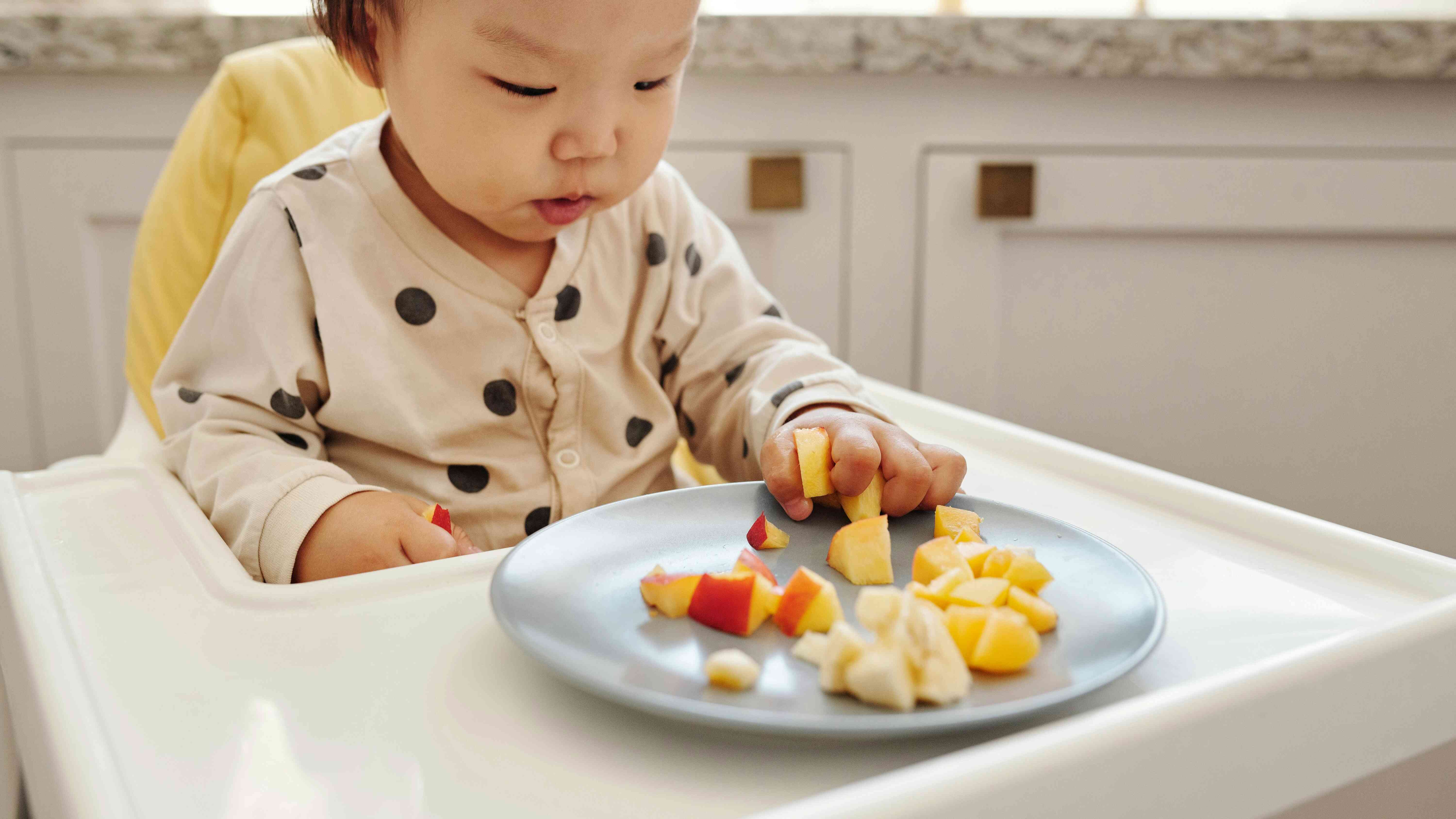Why I Chose a Combined Feeding Model (Baby Led Weaning and Purees)

No matter what way you slice it, feeding a baby is hard. Once your baby is 6 months old (baby’s gut really cannot handle food before then), sitting up unsupported for at least 5 seconds, and has great head control you can start feeding your baby solids. It may feel overwhelming and scary at first to know what and how to feed your baby. The great news is, you do not have to stick with any one program. Find what works best for your baby and run with it. Here are some reasons why I chose to do both baby led weaning and purees.
Baby Led Weaning (BLW) is a method of introducing a variety of foods that the family typically eats. Key components of baby led weaning are that it is self directed, meaning baby feeds themselves whether they are eating whole foods or foods that can be eaten with a spoon. Baby led weaning also introduces foods as a ‘teether’ for babies meaning they are large and therefore reduce the risk of choking. Baby led weaning is fantastic for developing the jaw strength necessary to increase endurance when chewing, encourages lateral tongue movement necessary for moving a bolus of food to one side of the mouth to swallow, and it helps set the stage for normalized dental development. In addition, it is great for babies to learn to use bilateral coordination skills (using both hands together) and bringing hands to the midline to hold food. Admittedly, it can be scary as the baby will gag when learning to handle foods. This is a good thing! It is important to stay calm as babies will feed off of nervous energy. While baby is eating, model chewing, spitting out food and eating. Mealtimes should be fun and stress free. Eventually, the baby will learn how to handle foods and will eat more quantities of food. I love the Solid Starts Food Database to search each food and see how to prepare it for my baby’s age. Solid starts also has a great app where you can track food you’ve tried and track baby’s reaction. I tried it, but ultimately found I didn’t need it (see my blog post about things that changed the game for me postpartum).
Feeding purees can also be beneficial for babies. When feeding purees, I use two spoons. I load one spoon and set it on the high chair tray with the handle facing the baby. Once they pick up the first spoon, I load the second and repeat the process. This allows the baby to improve skills using utensils. In addition, feeding with purees allows babies to play with their food and promotes messy play. Messy play is great for tactile development and encourages the baby to explore several of the properties of food. Feeding purees was also much more comfortable for my caregivers. We are so lucky that my mom and mother-in-law help us out with our baby. They are the most experienced caregivers, but feeding a baby is totally different now. When we were babies they would feed us rice cereal and baby food from a jar. I found it more important to continue introducing foods to my baby even when I could not be there, but I did not want to make it too hard on my baby or caregivers. Lastly, prepping purees is sometimes just easier when you need something quick and prepped and need to get out of the house for daycare. I would buy bags of frozen veggies and steam them or prepare them as directed, then add breastmilk or water to a blender and make the puree. Then, I would freeze the purees into silicone ice cube trays, making it an easy grab and go option. This method also allows grading the texture and leaving some foods chunkier as the baby learns to handle more.
When starting solids, it is important to start introducing water as well. Try using an open cup (we love the tiny cup) and learning to drink through a straw.
It is important to keep feeding your baby as simple as possible for both you and your baby. Enjoy this phase as your baby learns so many new things about their world!
